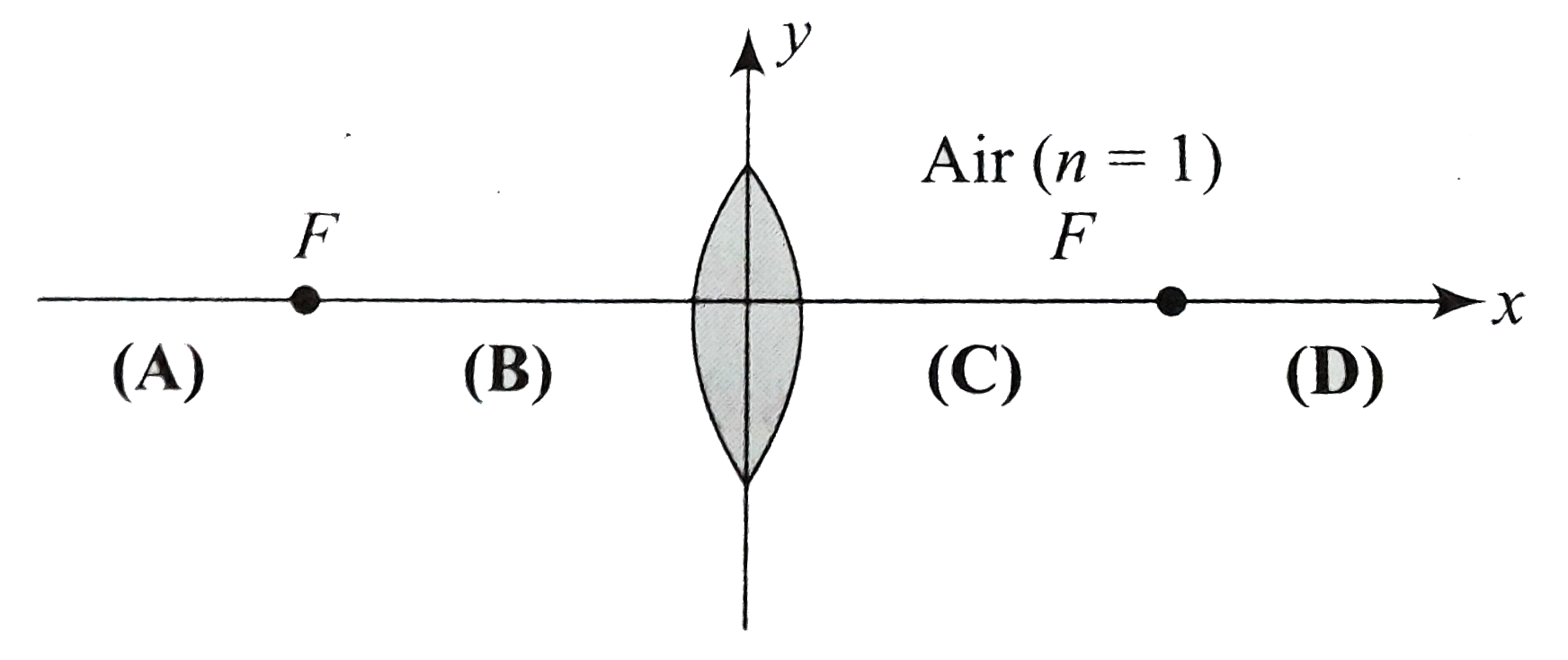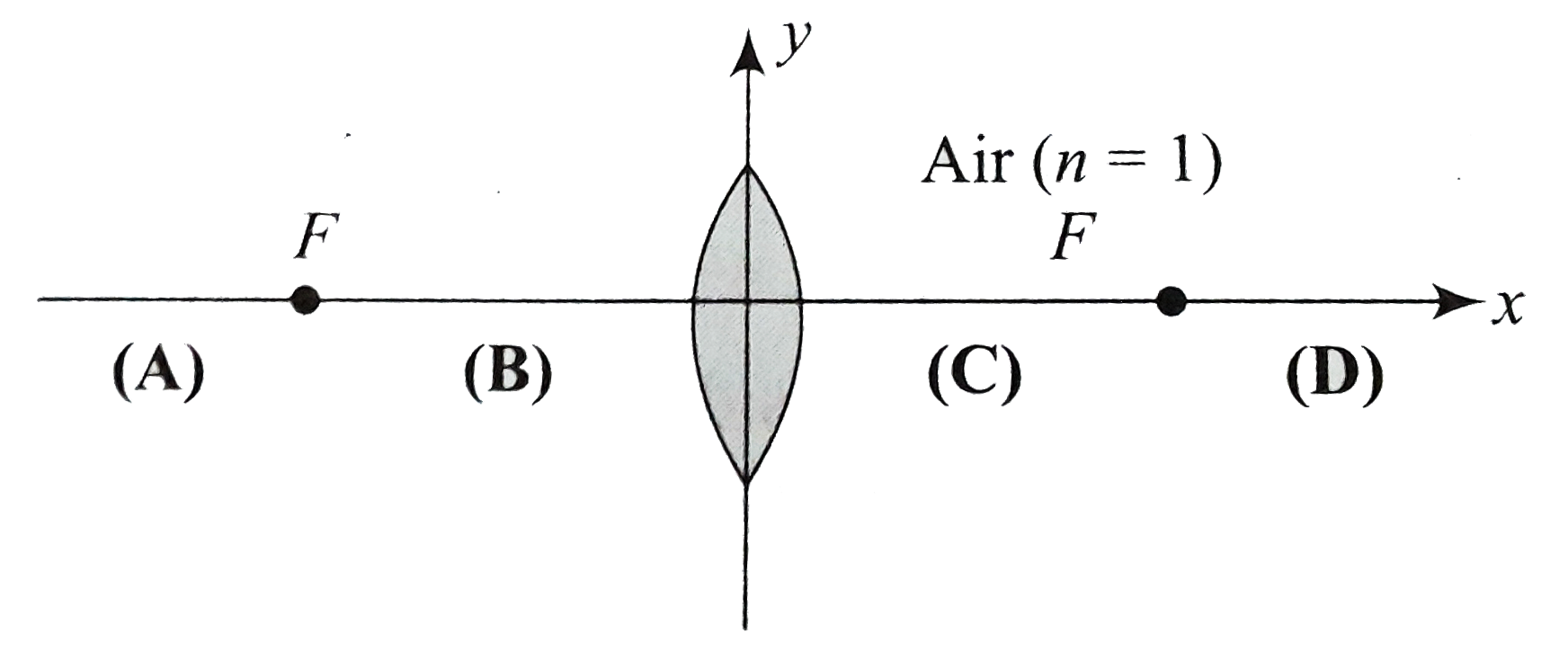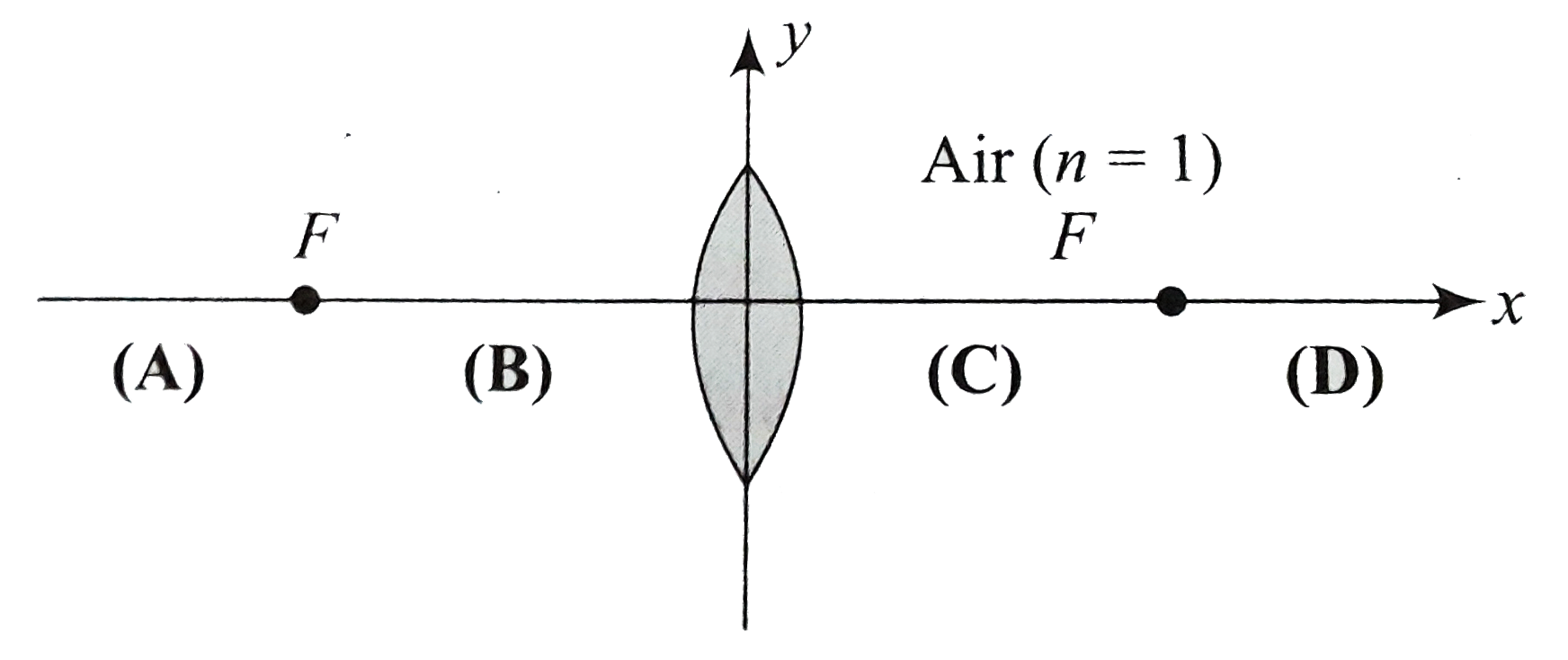This question concerna a symmetrical lens shown, along with its two focal points. It is made of plastice with n=1.2 and has focal length f. Four different regions are shown:
Here,
A. −∞x<−f B. −f<x<0
C. 0<x<f D. f<x<∞

Q. A second lens is now placed adjacent to the first in contact with it. The new lens is concave, with a focal length f=−3f. What is the focal length of the two-lens system? Treat the lenses as thin.
A
A
B
B
C
C
D
D
Video Solution
Text Solution
The correct Answer is:d
From the formula of equivalent focal length of thin lenses in contact, we get
1F=1f1+1f2=1f−13forF=3f2
|
Updated on:21/07/2023
Topper's Solved these Questions
- BOOK - CENGAGE PHYSICSCHAPTER - GEOMETRICAL OPTICSEXERCISE - Integer15videos
GEOMETRICAL OPTICS
- BOOK - CENGAGE PHYSICSCHAPTER - GEOMETRICAL OPTICSEXERCISE - Archives7videos
GEOMETRICAL OPTICS
- BOOK - CENGAGE PHYSICSCHAPTER - GEOMETRICAL OPTICSEXERCISE - Assertion-Reasoninig2videos
GEOMETRICAL OPTICS
- BOOK - CENGAGE PHYSICSCHAPTER - FRICTIONEXERCISE - QUESTION BANK1videos
FRICTION
- BOOK - CENGAGE PHYSICSCHAPTER - GRAVITATIONEXERCISE - Question Bank39videos
GRAVITATION
Similar Questions
Knowledge Check
- Question 1 - Select One
This question concerna a symmetrical lens shown, along with its two focal points. It is made of plastice with n=1.2 and has focal length f. Four different regions are shown:
Here,
A. −∞x<−f B. −f<x<0
C. 0<x<f D. f<x<∞

Q. If incident rays are converging, then in which region does the image appear?AABBCCDD - Question 2 - Select One
This question concerna a symmetrical lens shown, along with its two focal points. It is made of plastice with n=1.2 and has focal length f. Four different regions are shown:
Here,
A. −∞x<−f B. −f<x<0
C. 0<x<f D. f<x<∞

Q. If an object is placed somewhere region (A), in which region does the image appear ?AABBCCDD - Question 3 - Select One
Correct order of IE1 are:
(P) Li<B<Be<C (Q) O<N<F
(R) Be<N<NeAP,QBQ onlyCP,RDP,Q,R
Find the inverse of each of the following functions :
f(x)=⎧⎪⎨⎪⎩x,−∞<x<1x2,1≤x≤42x,4<x<∞View SolutionIf E and F are two events such that 0 < P(F)< 1, then
View SolutionIf the function f(x) =5x−4, ... 0<x≤1=4x2+3bx, ... 1<x<2 is continuous at every point of its domain , then : b =
View SolutionLet f(x)=[(x+3,,−2<x<0),(4,x=0),(2x+5,,0<x<1), then
limx→0−f([x−tan]) is : [.] denotes greatest integer function)View SolutionLet f(x) be defined as
f(x)={sin2x0<x<π6px+qπ6<x<1, If f and f' are continuous then [p,q) is equal toView Solution

